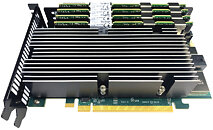ID-COOLING Announces IS-47S 47 mm Low Profile CPU Air Cooler
ID-COOLING today announced IS-47S 47 mm height low profile CPU air cooler. At a total height including the fan of 47 mm, this cooler would be a good choice for your A4 cases. Designed with an overall dimension of 100x93x47mm, it has no conflict of the RAM or PCI-E slots. The heatsink is solid built with a pure copper base and 4 heatpipes and massive aluminium fins. The heatsink itself is measured at 35 mm height. Adding a powerful 12 mm PWM fan, this cooler is capable of handling processors with a maximum TDP of 95 W. In terms of mounting kit, two separate backplates are provided in the box for Intel and AMD respectively. The sockets list includes Intel LGA1700/1200/1151/1150/1155/1156 and AMD AM4.
The bundled thermal grease is named FROST X25, which has a thermal conductivity of 10.5 W/m-K.
The bundled thermal grease is named FROST X25, which has a thermal conductivity of 10.5 W/m-K.























































